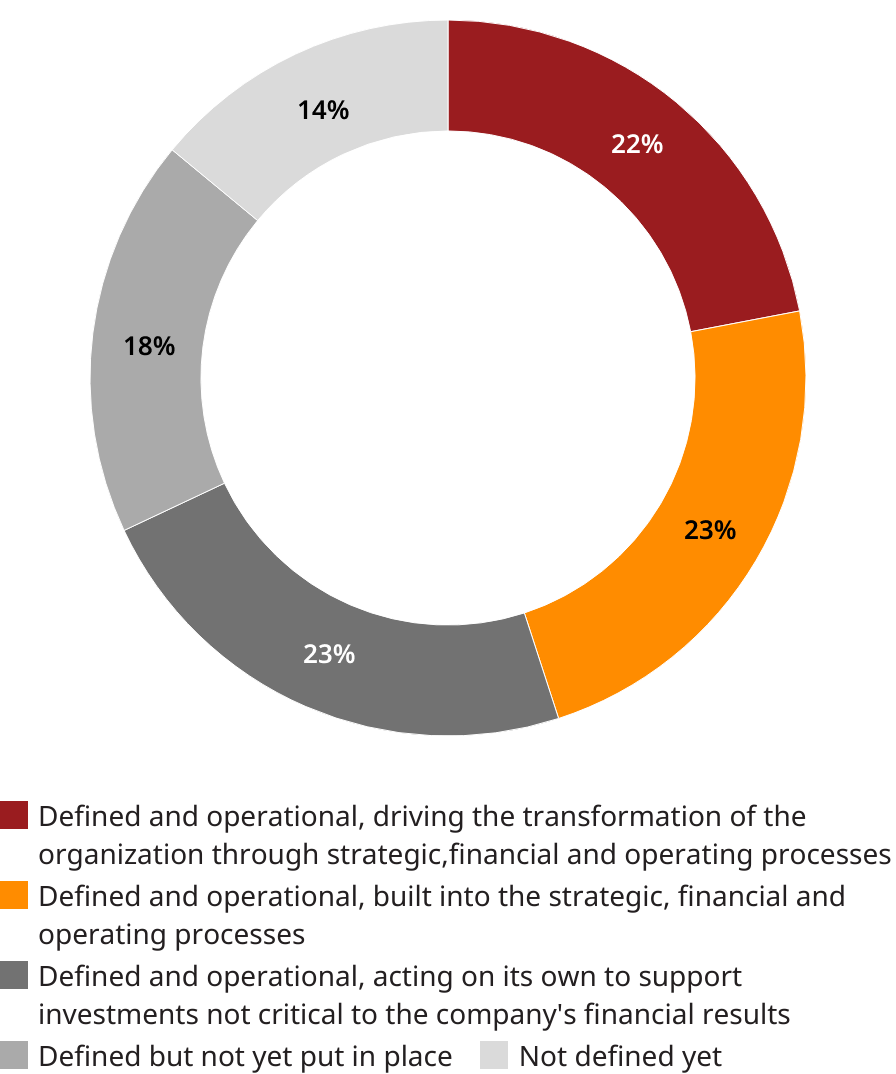The step-change in corporate climate action in the past few years has been extraordinary. Yet we are more than halfway through the critical period between the 2015 Paris Agreement and 2030, the agreement’s target year for halving global emissions, and emissions are still rising. Clearly, we need to scale up.
Companies can make incremental contributions to decarbonization in ways that conflict with their corporate interests because the conflict is manageable. But to secure the investment and leadership commitment to act at scale, corporate and climate interests need to align. The leaders of this stage of the effort have a positive vision for a role they want to play that will achieve this alignment.
To get there, they live the proven innovation principle of creative destruction. They don’t let their stake in the old prevent them from pursuing a stake in the new. Instead, they take a lead to avoid the business risk of being left behind. And to manage the huge uncertainty – over future regulations and technologies, as well as the parallel moves made by competitors, customers and suppliers, at different paces around the world – they use bold tactics to make meaningful progress while keeping future options open.
This is how companies are unlocking the investment needed for climate action at scale. It’s not just about emissions reductions – or, at least, not directly. It’s about business design.
Finding this alignment is not easy. Some companies see natural opportunities, but most need to create the conditions in which self-interest can support climate action at scale.
Below we illustrate how some leading companies are aligning their corporate and climate goals.
Decarbonization of food and drinks packaging by substituting plastics is a growth strategy for Ball Corporation, a market leader in aluminum packaging. It envisions an expanding market for aluminum packaging made possible by the circular economy. Ball has recently invested in a rolling mill in the US with remelting capacity for recycled aluminum. This commitment prompted two of its main suppliers to invest in supplying the aluminum scrap to feed it.
Maersk feels an obligation as an industry leader to lead the move away from fossil fuels for shipping. In 2021 Maersk ordered its first methanol-powered vessel, taking a bold bet to replace part of its fleet with e-methanol ships. The risk was in whether the fuel would be globally available, but already several competitors have followed Maersk’s lead. “Now there are over 100 container ship orders; we have four competitors now aligned. The chicken has met the egg.”
Sodexo recognizes that ultimately net-zero goals will require big changes to the agricultural supply chain. To achieve its 2030 targets, Sodexo is focused on “low carbon meals”, shifting the balance of the consumer’s plate from animal to vegetable proteins. There are both environmental and economic interests, as the source proteins have generally less environmental impact and are cheaper.
BHP works with its steelmaking customers and other key players to advance abatement at progressive stages in its steel decarbonization framework. In Asia, it is working with steel customers to progress the technologies needed to capture carbon dioxide from their steelmaking. This is down the value chain from mining but is part of the Scope 3 inventory that BHP reports from processing of its iron ore and metallurgical coal in steelmaking.
This report would not have been possible without the willingness of climate, sustainability, and commercial leaders who shared their experiences of seeking to achieve climate action at scale – their challenges and frustrations as well as their workarounds and breakthroughs. We are grateful to them for sharing their perspectives with us.
This report is co-authored with the Climate Group.



